How to Prune Grapevines: 3 Tips & When to Do It
-
Pete Ortiz
- Last updated:
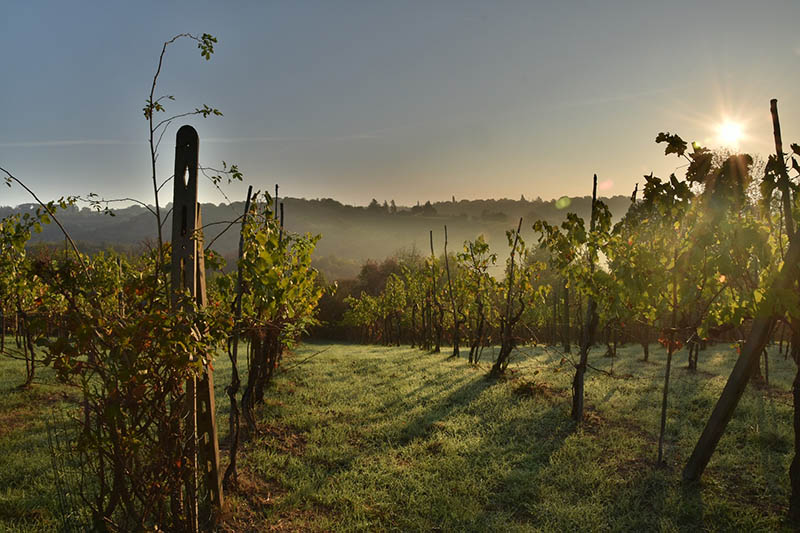
Pruning grapevines can be a little complicated, especially if you are new to the experience. However, the process gets easier- the more you do it, the more you become an expert, and you can always have another chance to rectify your mistakes during the next pruning season.
Furthermore, it is not something you can simply ignore if you want a healthy and fruitful vineyard. In this article, we look at how to care for your grapevines through pruning. Read on to learn more.
Click to Jump Ahead:
Benefits of Pruning Grapevines
- Pruning protects grapevines from disease. It keeps them healthy by ensuring that the parts carrying bacteria and diseases are chopped off before they cause serious damage to the whole plant.
- It ensures a fruitful outcome. When you prune grapevines, it simply means you are removing unwanted excess parts, hence improving air circulation and vine growth. Growth energy will only be focused on the remaining selected wood that will contribute to a fruitful outcome.
- Pruning will give shape to your grapevines. You can maintain the shape of your grapevines’ trunk and shoots each year by chopping off unwanted parts. As you prune, you can also use a stake to support the new growing grapevine by tying it at the top and bottom to ensure it grows upright.
Before Pruning: Establishing Young Grape Plants
Before grapevines have grown enough to undergo the pruning process, you must experience the initial growth and setup process. After getting hold of your new grape plant, there are high chances the plant will not be pruned, and lots of bare shoots will be seen shooting from the top.
Below are the steps you should follow when growing a grapevine plant from the beginning, before pruning begins:
Plant the Grapevine in Spring
Spring is believed to be the perfect season to plant a new grape plant. The weather is friendly to support growth all through to the next season. Give the vines adequate water and fertilizer.

Reduce the Excess Grown Shoots
Once the grape plant is firm on the ground, cut the existing numerous shoots into three buds so that nutrients do not get wasted on the unwanted shoots. Removing the numerous shoots will facilitate the quality growth of the remaining ones.
Support the Strongest Shot by Tying It to a Stake
Once the remaining three shoots have grown to about 12″ long, identify one of the most vigorous shoots. Use a stake to support it by tying it at the top and bottom. At this point, you may remove the remaining shoots and allow the tied one to grow into a permanent trunk. Pruning off the other shoots ensures that all the nutrients and minerals go to the remaining shoot.
Allow the Tied Shoot to Grow Throughout Its First Summer
Do not remove the stake; let the remaining shoot remain supported to grow upwards and strong. The stake will also ensure the plant does not break in strong winds. This shoot will sustain the grape plant for its whole life; therefore, it should remain upright, supported, and strong.
Helpful Tips on When and How to Prune Grapevines
Once your vines are fully established with the care tips discussed above, then you’re ready to prune. Discussed below are helpful tips on when and how to prune grapevines.
But first, it’s important to understand some basic terms that you may encounter in the grapevine’s pruning procedure.
| Shoots: | young leaves or stems growing from buds |
| Buds: | stems growing from dormant wood |
| Fruitful wood: | a stem old enough to produce fruits |
| Arm: | branches of the grapevine |
| Cane: | a dormant stem |
| Spurs: | pruned canes that will produce new shoots the following year |
| Trellis: | a post or wire that supports and maintains the posture of the grapevine as they grow |
| Dormant season: | winter season |
| Training system: | a trellis structure that supports and maintains the posture of the grapevine |
When to Prune Grapevines
The most appropriate time of the year to prune grapevines is during winter and summer. The winter season is also known as the dormant season. During winter, the water sugars and minerals of the grape plant are gathered from its roots. Pruning during winter often contributes to the quality growth of the grape. The best time is usually between February and March.
On the other hand, summer pruning is best done in June at the beginning of the season. That way, the grape plant will be able to receive the required nutrients and sunlight throughout the entire season.
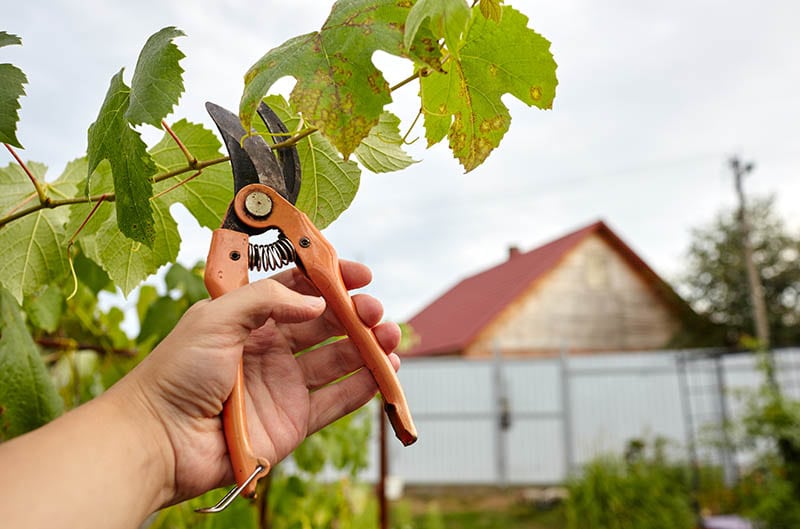
The 3 Tips for Pruning Grapevines
- Gardening gloves to protect your skin from prickly grapes.
- Hand shears for cutting softer parts of the vine
- Orchard loppers for cutting more strenuous shoots that a hand shear can’t cut.
- Curved saw for pruning more challenging branches that require cutting off.
1. Eliminate Unproductive Vines
Use either a hand shear or an orchard lopper to cut off the vines that are no longer productive. Such vines will only prevent the vines that are highly productive from getting efficient sunlight and required nutrients. You wouldn’t want poor yields due to sparing unproductive grapevines.
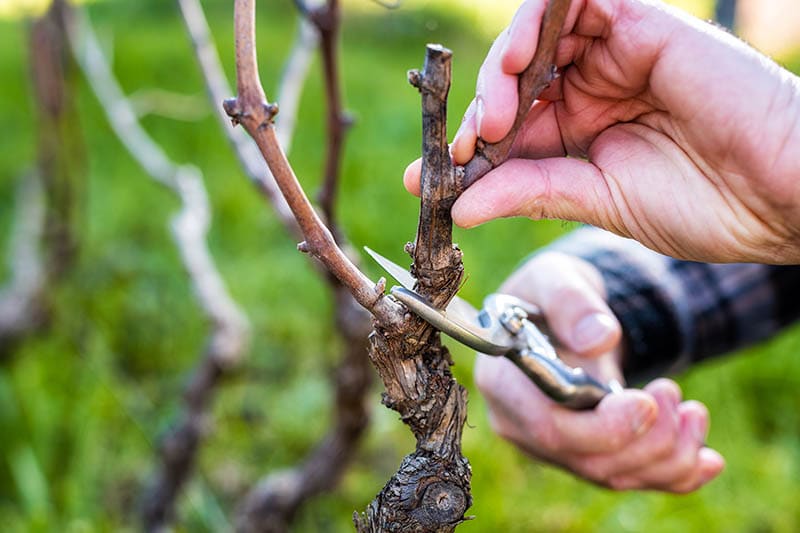
2. Cut Off Shoots and Leaves Blocking Sunlight
Grapes mature better and ripen more efficiently when adequate sunlight reaches them. However, that can only happen if no shoots or lower leaves block the pathway of the rays. Ensure to cut the shoots and leaves blocking sunlight, especially those around the grape bunches.
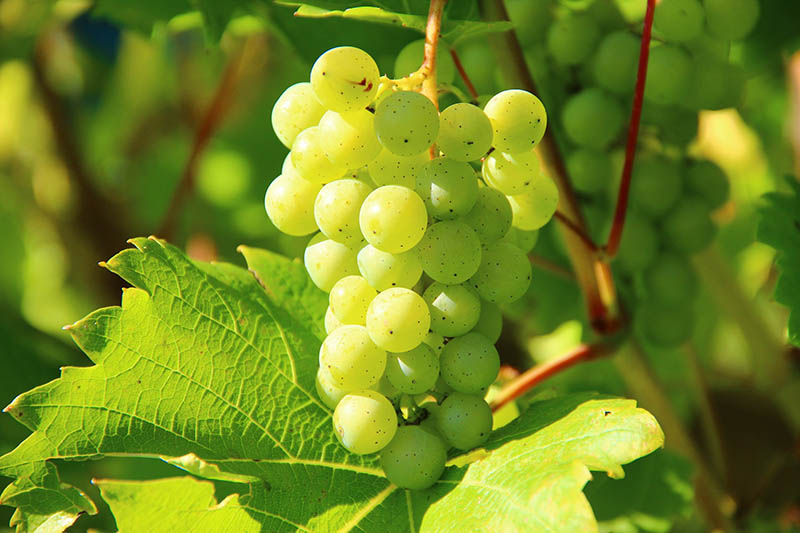
3. Leave Enough Leaves on Each Shoot
Adequate sunlight ensures sufficient energy to facilitate the growth and sustainability of the entire grapevine plant. As you prune the grapevines, ensure each shoot has at least 14 to 16 leaves to gather sufficient sunlight. Do not chop off too many leaves during summer, since they will fall off on their own during winter.
Pruning during summer should be done at the beginning of the season, allowing the grape plant to enjoy sunlight and nutrients throughout the season. The longer they get sunlight, the more the grapes ripen even better.

The 2 Grapevine Pruning Methods
There are two methods to prune grapevines during winter:
1. Cane Pruning
With the cane pruning method, you will first be required to establish a permanent trunk. You must cut the grape plant each winter and be left with a single cane. The new shoots will grow on the remaining single cane as the new fruiting canes.
In the first year of planting your grapevines, allow them to grow for the roots are firm on the ground. The pruning will begin a year after planting the grapevines. A permanent trunk is established- this is one central cane that grows higher than the rest.
When the top bud is pruned, lateral arms grow on the top bud and below. Those below will grow into new canes. Once the cane grows buds, trim at least two on each side and let the rest become a fruiting cane that grows grapes.
2. Spur Pruning
Spur pruning requires the use of the cordon system. Cordons are grapes that go dormant for two to three seasons. Each season, they must grow new shoots that you must spur with at least one bud. The buds on this spur will grow the fruiting canes for the following year through a method known as cordon training. Ensure the selected cordons are disease-free for a successful outcome.
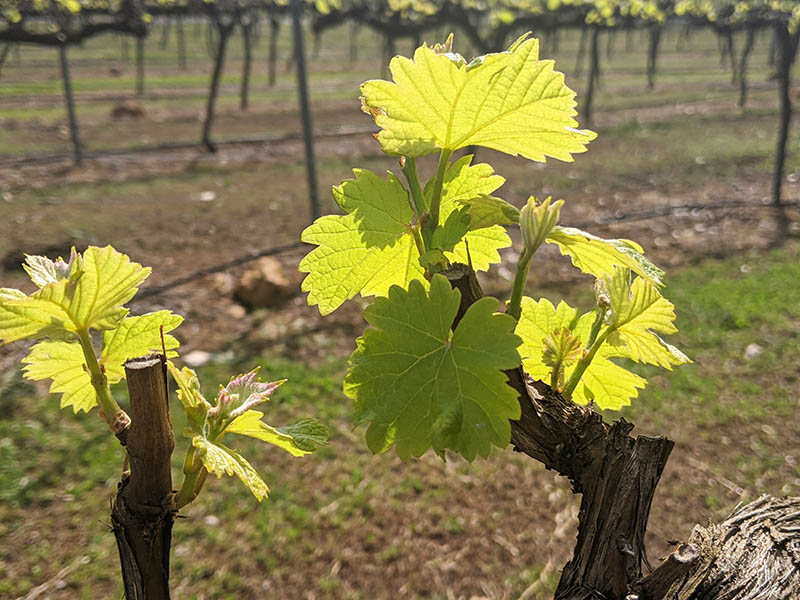
The 3 Grapevine Pruning Mistakes to Avoid
Anybody can make mistakes when pruning grapevines, especially if doing it for the first time. However, you can avoid such errors to make pruning easier and increase your harvest quantity. Common mistakes to avoid include:
1. Inadequate Pruning
The fear of damaging your grapevine plant may prevent you from pruning it efficiently. Remember, the more you prune your grapevine, the more fruitful results you stand to gain. It may seem wrong to prune the grapevines completely, but the truth still remains that the more growth is removed, the healthier and more productive the remaining part of the grapevines.
2. Dependence on Size Misconception
Most grapevine growers may believe that bigger canes are obviously perfect for producing more harvest compared to medium-sized ones, which is often not the case. Moderate-diameter canes can yield more results than the bigger ones. When pruning, ensure the remaining canes are slightly thicker than your thumb but not smaller than a pencil.

3. Pruning Without Adequate Information
Guesstimation is often the way to go for most new grapevine farmers. Also, those with some experience may not see the need to learn something new about pruning their grapes. It is always a good idea to gather adequate information on how to prune grapevines, the required methods, and the training systems.
How Do You Train Your Grapevines After Pruning
There are three main methods to train your grapevines as they approach maturity. The methods include:
- The Guyot training system: The Guyot training system is used on grapevines often found growing in wine cultivars. For this training to be successful, two fruiting arms must grow from the main stem.
- Cordon training system: The cordon training system is perfect for conservatory growing grapes. Often, grapes are grown indoors, like in glasshouses or those developed against walls.
- Grapevines in containers: Grapevines in containers is a type of training where grapevines have limited space, and they are pruned and trained in a container where only the heads of the branches are at the top.
To efficiently train the new shoots of your grapevines, do it during the summer and spring seasons. You will be required to put up a structure wherever you want to place your grapevines to work as a support system. For instance, if you’re going to put up your structure against the wall, use 3-4mm diameter galvanized wires laid horizontally along the wall. Space the wires at least 1 foot apart and thread them through ’vine eyes.’
If you want to build your structure on open ground, ensure you have treated timber posts that can withstand the pressure of 2m x 10cm and 3-4mm diameter galvanized wires between the posts. Ensure the beginning two wires are at least 40cm and 55cm above ground, while the post is at least 30cm (1ft) apart.
Below are helpful tips that will help you through the training process as you prune your grapevines.
- Remove the shooting stems from the base. To ensure your grapevines are growing upright and getting all the required nutrients, ensure to prune any new developing stems that may begin to grow from the base.
- Allow the growth of side branches of the main stem for at least the first two years.
- Let at least six side branches grow at the top of the main stem in the third winter. However, make sure to trim those in the middle and the bottom.
- Make sure the side branches have a maximum of five leaves by pruning the rest.
- Also, chop off shoots that seem to be developing from side branches.
- Do not allow more than a single bunch of grapes to develop in the first cropping year. For the rest of the year, let one bunch of grapes grow per side.
- During winter, ensure to prune the side branches to only remain with the two buds.
In Conclusion
Grapevine pruning may seem challenging, but it gets easier each season as you get used to it. Pruning comes with significant benefits both to you and to your grape plant; however, it is important to avoid assuming factors and gather adequate information before you begin the process.
Once you follow the above-mentioned pruning tips and guidelines, the process will become clearer for you. You can also use the mentioned training systems to train your grapevine as you prepare it for the following seasonal harvests.
Featured Image Credit: Vogelfreund, Pixabay
Contents


